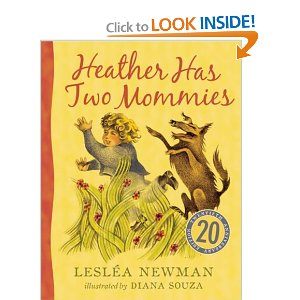 (Dumb title, sure, but one of them does have a No Nukes t-shirt.)
(Dumb title, sure, but one of them does have a No Nukes t-shirt.)
First of all, I just have to give mad props to author Leslea Newman for two things:
1) Writing this book in the first place – it took a lot of courage
2) Amending the book for a later addition that still gets the message across but removes the age-inappropriate specifics of artificial insemination and pregnancy that I think must have helped make the book as controversial as it became on first publishing.
I personally like that Heather Has Two Mommies features not just Heather and her moms but a range of family structures.
I do wish there were more books that featured gay parents. Tthe main fault of this book in my view is not that it talks about two moms, or even the old addition with the very explicit details of human reproduction, but that it has a mission. Not a point of view, a theme, but a mission. It knows it’s the only book about two moms, and it was written to Be That Book.
It tries to do everything in just one book – represent women in unconventional work roles, show happy kids with gay parents, present an inclusive range of family types that borders on the super-cheesy… Thus it tends to read like a lesson in being liberal more than a real story.
The Issue with Issue Books
Most books written “about” a kid’s issue – starting preschool, bullying, saying goodbye, using manners, getting a new sibling, divorce – tend to read like this – as thinly veiled instructional manuals that only pose as a story. Generated from the desire to teach a fact as opposed to a desire to express a truth, these books strain to achieve beauty, rhythm, humor, genuine emotion.
There’s something manipulative about this kind of story that I just plain don’t like. I don’t like it when a children’s book – or video, for that matter – tries to make hard things in life fun or easy with entertaining ploys to distract or trick the kid into brushing her teeth or going potty.
Yes, books teach us; most of what I know about the world came from novels (sometimes accurate, sometimes not). But don’t use a lame storyline, a bright shiny object, to attract attention and slip the medicine in while they’re not looking. For one thing, it doesn’t work. For another thing, it’s boring and it sucks to read.
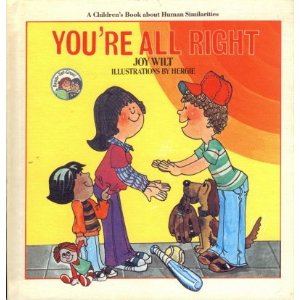 Books That Teach That Work
Books That Teach That Work
On the other hand, books that are upfront about their educational intentions work. (Go figure.)
The series by Joy Wilt that includes You’re All Right explicitly set out to clue kids into their bodies, emotions – what it means to be a person, have accidents, make mistakes, and my kids love them. They’re long, but the comic-like artwork is fun, simple, and the concepts are clear, and good conversation-starters.
Most straightforward science books we have, too, tend to be involving.
Conclusion: Either write fiction or nonfiction – don’t write nonfiction and dress it up like fiction. It’s condescending. And kids can sniff that out, even when it’s coming from a book.
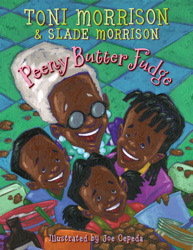
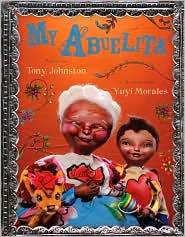


 grandparents’ house. They have a window at the front of the house that is very special and magical. It is the window to the kitchen where all the fun takes place. My children love it because it reminds them of going to visit their grandmother.
grandparents’ house. They have a window at the front of the house that is very special and magical. It is the window to the kitchen where all the fun takes place. My children love it because it reminds them of going to visit their grandmother. racial family where the mother is black and the father is white. Again, the story is not about the racial makeup of the family. It is a very mysterious story because you are not sure why the aunt has come to stay. This book is good to get children talking about their own experiences. Children may say that the aunt is sick, that she has lost her home, or that she has recently divorce. I found this to be a good book to read tochildren in pre-kindergarten through 1st grade.
racial family where the mother is black and the father is white. Again, the story is not about the racial makeup of the family. It is a very mysterious story because you are not sure why the aunt has come to stay. This book is good to get children talking about their own experiences. Children may say that the aunt is sick, that she has lost her home, or that she has recently divorce. I found this to be a good book to read tochildren in pre-kindergarten through 1st grade.

 to make the world a more beautiful place; a task bestowed upon her by her grandfather.
to make the world a more beautiful place; a task bestowed upon her by her grandfather. Not that I am hoping that they spend their lives as single women. I want them to know that the best choice is the one that works for them.
Not that I am hoping that they spend their lives as single women. I want them to know that the best choice is the one that works for them.


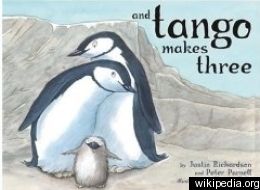 … is not,
… is not, 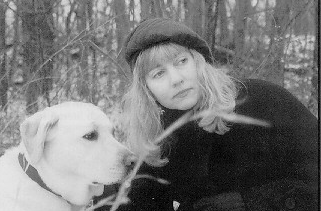 On the Diversity Scale, which I just invented, I give
On the Diversity Scale, which I just invented, I give
Love in The Secret Garden January 11, 2010
Regrettably, I never read The Secret Garden as a child and I missed out on one of the best books ever written for children. Maybe if I had, I would have had a more positive outlook on life. The author, Frances Hodgson Burnett, was a follower of New Thought, and believed that positive thinking could heal everything. And while I do not subscribe wholly to the same beliefs, I do feel that a positive outlook makes for a much more enjoyable and fulfilling life.
The main character, Mary Lennox, is often described in book reviews as a spoiled child who learns to to be good and giving . While I will agree that Mary is spoiled, I don’t believe that she “learns” to be a good girl. I believe that she is as good as any child, but she has been neglected and needs to love and be loved to to bring out her own goodness. In the first few pages of the book, I was gripped by my motherly desire, to reach down into the words and pages and pull Mary to me.
Mary has spent the first ten years of her life in India being tended to by her “ayah”. She never sees her parents, who, although they live in the same household, are more concerned with their social engagements than their daughter. Her mother is vain and never wanted a child. She never interacts with Mary, who only gets to spy on her mother from afar.
When her parents and ayah die in a cholera outbreak, Mary is sent to live with her previously unknown uncle in England. He lives in the austere Misslethwaite Manor in Yorkshire. Mary is struck at once with the gray and dismal appearance of the Manor and the surrounding moor.
However, it is here that Mary experiences her first acts of love and kindness. First from her chambermaid, Martha, who refuses to dress Mary but chatter away with stories about her family in her most “broad Yorkshire”. It is Martha who is so concerned with the sad, skinny, sallow Mary that she gives her a skipping rope. Martha tells Mary she must go outside and breathe the fresh air and get lots of excercise.
Then, it is Dickon, Martha’s brother who shows Mary kindness. He helps her in the secret garden. He shows her how to plant seeds and tend to growing things. Dickon has an uncanny ability to befriend every bird and mammal he meets on the moor. Mary believes him to be magical, and is enchanted by his magic.
When Mary learns of her cousin, Colin, the biggest secret of Misselthwaite Manor, she learns to love. Colin, much like Mary, has been pampered and spoiled his whole life. Because his mother died while giving birth to him, everyone believes that he is ill and will surely die before reaching adulthood. Colin, who has heard this his whole life, believes it as well. Mary does not, and does everything she can to convince him. She shows her love for him by bringing him to the garden where he also gains health and strength from fresh air and exercise.
Through their love, Mary, Colin, and Dickon bring life and love to everyone at Misselthwaite Manor. Love and happiness spread as quickly as the cholera that took Mary’s parents. But this virus heals the deepest and oldest wounds.
I recommend this book as a read-aloud for seven years and up and as a read-alone for children eleven years and up. The author uses Yorkshire dialect, which could be hard for some children to read and/or understand.
One warning about this book: Indian people are referred to as “blacks”. I was thrown by this initially and contemplated not continuing to read it to my daughter. However, I used this as a teaching moment instead. My daughter and I discussed how the term is used and how people in the nineteenth century used it. We also talked about prejudice and how to deal with people who think that one group of people is better than another.
Overall, I love The Secret Garden because it reminds us that this life that we have is a magical and wonderful gift that we should be thankful for every moment.